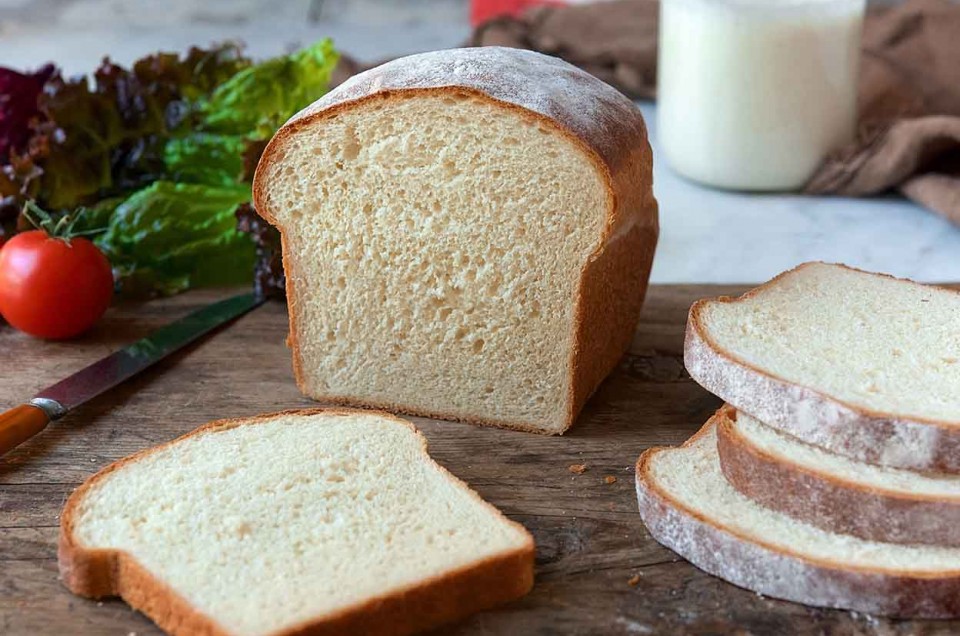


Have you ever used a levain for sandwich bread? I recently took a class at our Baking School here in Norwich, Vermont, where we learned to make Sourdough Sandwich Bread using a levain. And now I'd like to explain what role this levain — an overnight starter built from your regular sourdough starter — can play in your sourdough baking.
What is “levain," anyway?
Levain is a type of pre-ferment, in which a portion of the flour and water from a recipe are allowed to ferment slowly prior to mixing the dough.
While some pre-ferments (like a sponge or poolish) are fermented with a tiny amount of yeast, a levain uses a very small portion of your mature (fed) sourdough starter instead.
Using a levain (or any pre-ferment) contributes rich flavor to your bread because the extended fermentation time allows for more flavor development.
Why use levain, instead of just a cup or so of ripe (fed) sourdough starter, like you usually would?
Flexible timing: Using a smaller percentage of sourdough starter than usual, as you do with a levain, slows things down; there's simply less yeast attempting to consume a larger meal. This added cushion can help when you find that your timing was off; your “fed” starter has already risen and fallen, and you missed its peak of fermentation (the ideal time to add fed starter to your recipe).
Consistency: There are many, many sourdough starters out there, living in different climates, made with different flours, using different hydrations and different feeding regimens. Thus fed starter becomes quite a wild card. Minimizing the wildcard variable of fed starter by adding a prescribed "levain build" gets us all on the same page, thereby yielding more consistent results.
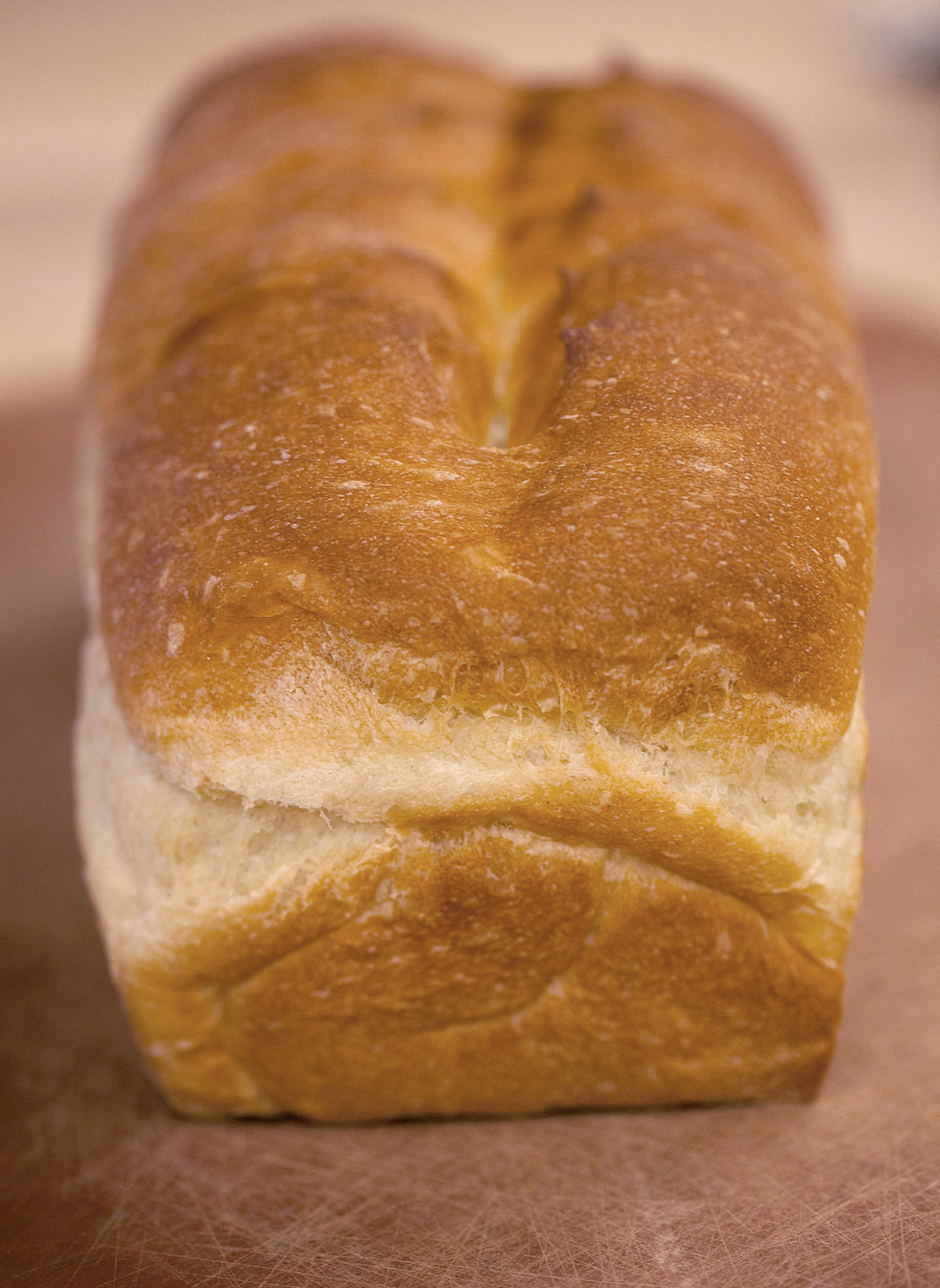
Let's get started making our bread.
Mix the following ingredients together and place in a covered container with room for the levain to grow. It will almost double in size, and will take about 12 hours to ripen (ferment) at room temperature (70°F).
1 cup plus 1 tablespoon (128g) King Arthur Unbleached All-Purpose Flour
1/2 cup plus 1 tablespoon (128g) cool water (60° to 70°F)
3 tablespoons (44g) fed (fully ripe) sourdough starter
Let's talk about what your fed starter should look like when you add it to the levain, which is also what your ripe levain should look like.
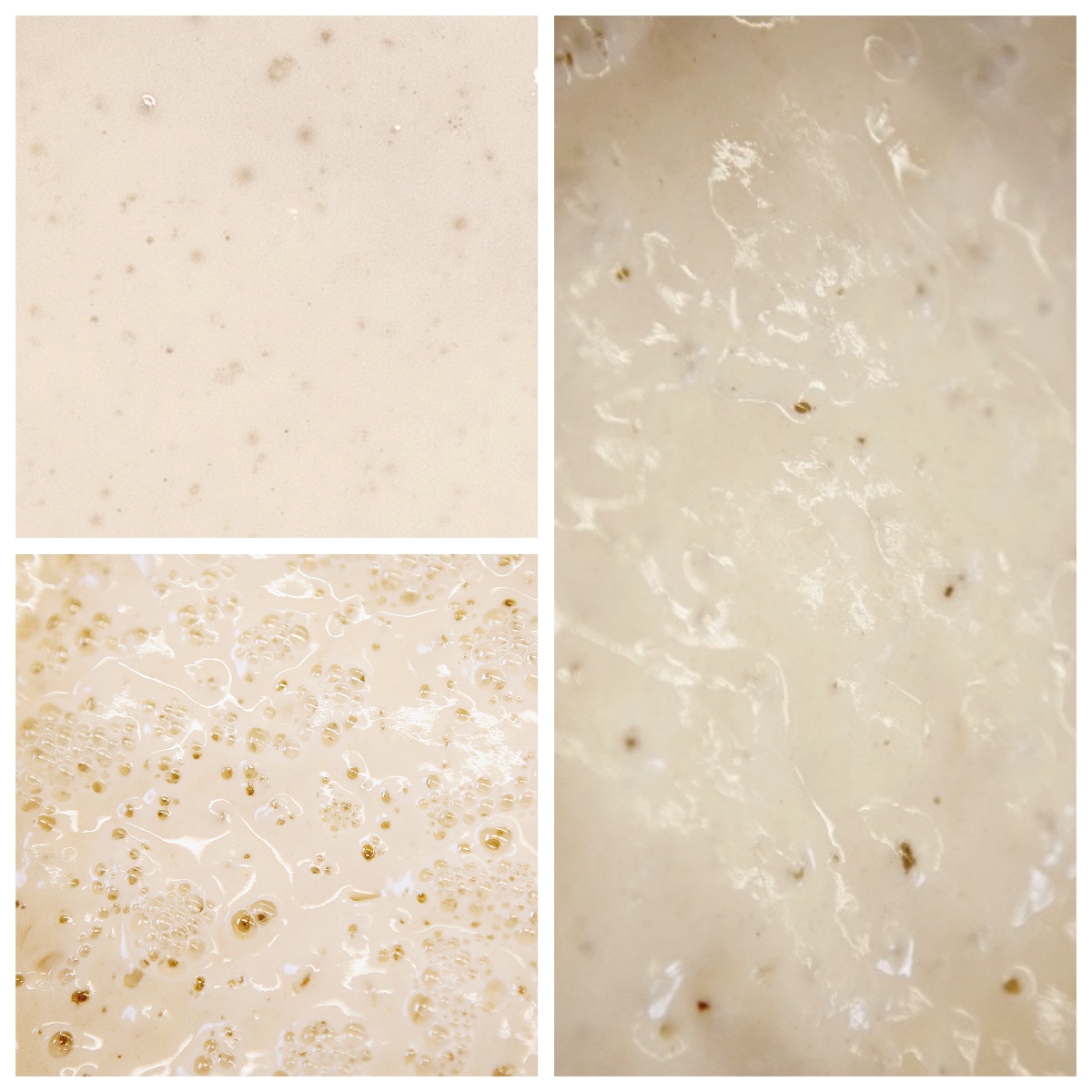
On the right is a perfectly fermented levain. Notice how the large bubbles are mostly below the surface, creating a somewhat rippled effect. The ripe levain's texture at this stage is almost fluffy.
Pictured at top left is a starter that's been left at room temperature and hasn't been fed for several days. There are a few tiny bubbles visible, but the consistency is very flat and thin.
At bottom left is a slightly over-fermented levain. Notice the clusters of frothy bubbles on the surface — this is a sign that we've waited a little too long and the levain is collapsing. Don't despair; the recipe will still work even if the levain has gone a little too long.
Once the levain build has fully ripened, we're ready to mix bread dough. Mix and knead together the following:
5 1/4 cups (631g) King Arthur Unbleached Bread Flour or King Arthur Unbleached All-Purpose Flour*
6 tablespoons (42g) Baker's Special Dry Milk or nonfat dry milk
1/4 cup (50g) sugar
2 1/2 teaspoons (15g) salt
2 teaspoons (6g) instant yeast
4 tablespoons (57g) room-temperature unsalted butter
1 1/2 cups (340g) room-temperature water (70° to 80°F)
all of the ripe levain
*While the original recipe calls for unbleached bread flour (for a stronger rise), our unbleached all-purpose flour will also work well in this recipe.
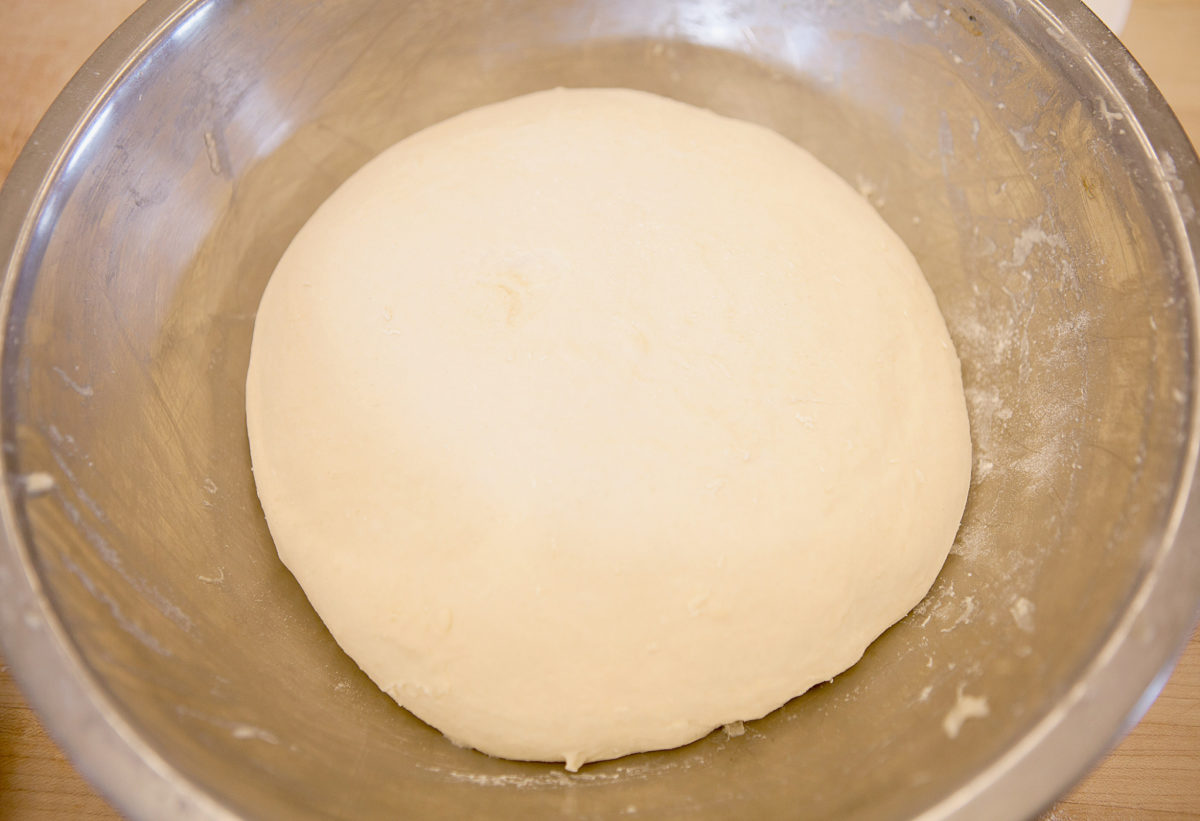
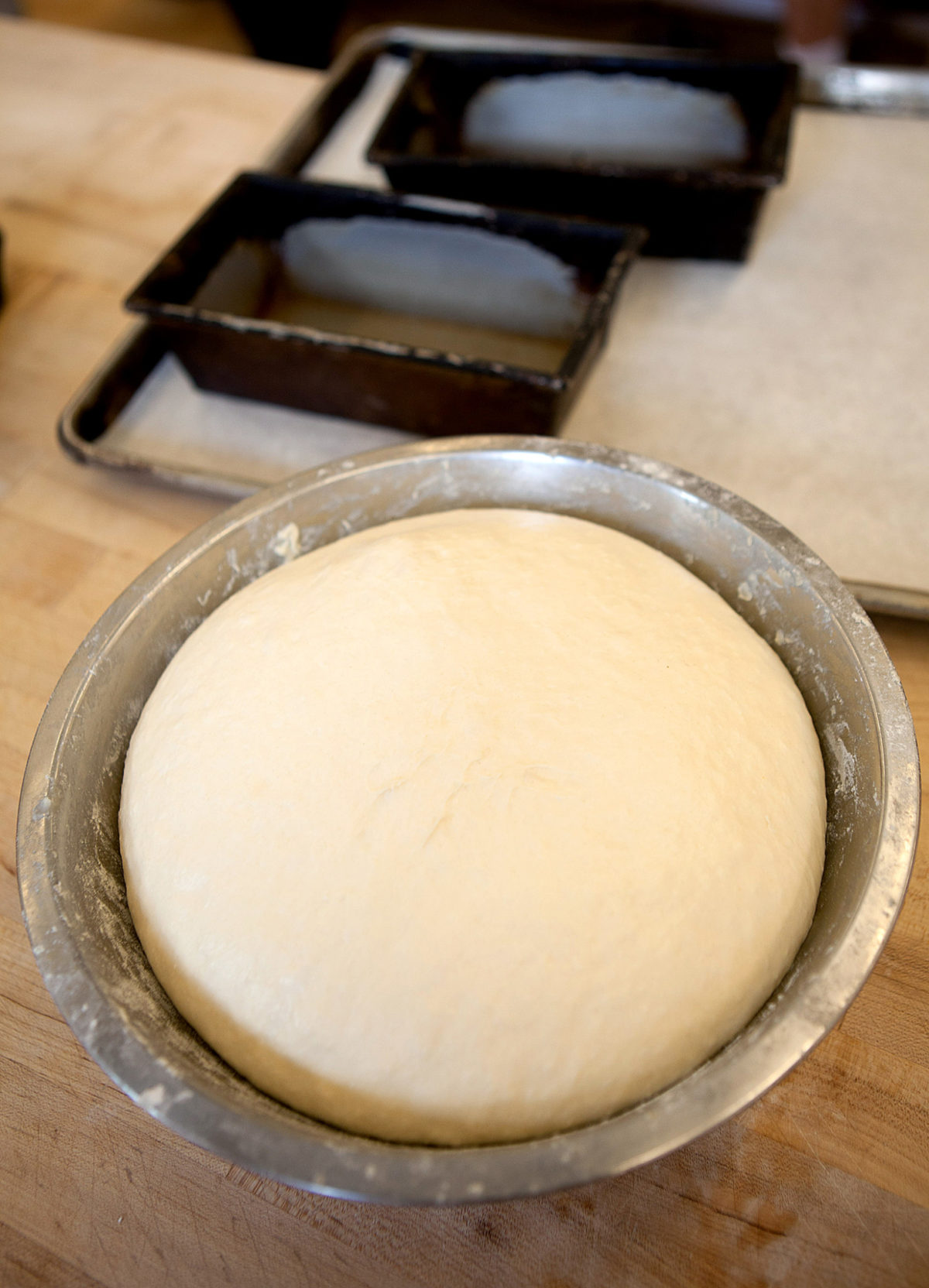
Place the kneaded dough in a lightly greased bowl, cover the bowl, and let the dough rise for 1 to 2 hours. My dough doubled in size in about an hour, but it may take up to 2 hours if your home is cool.
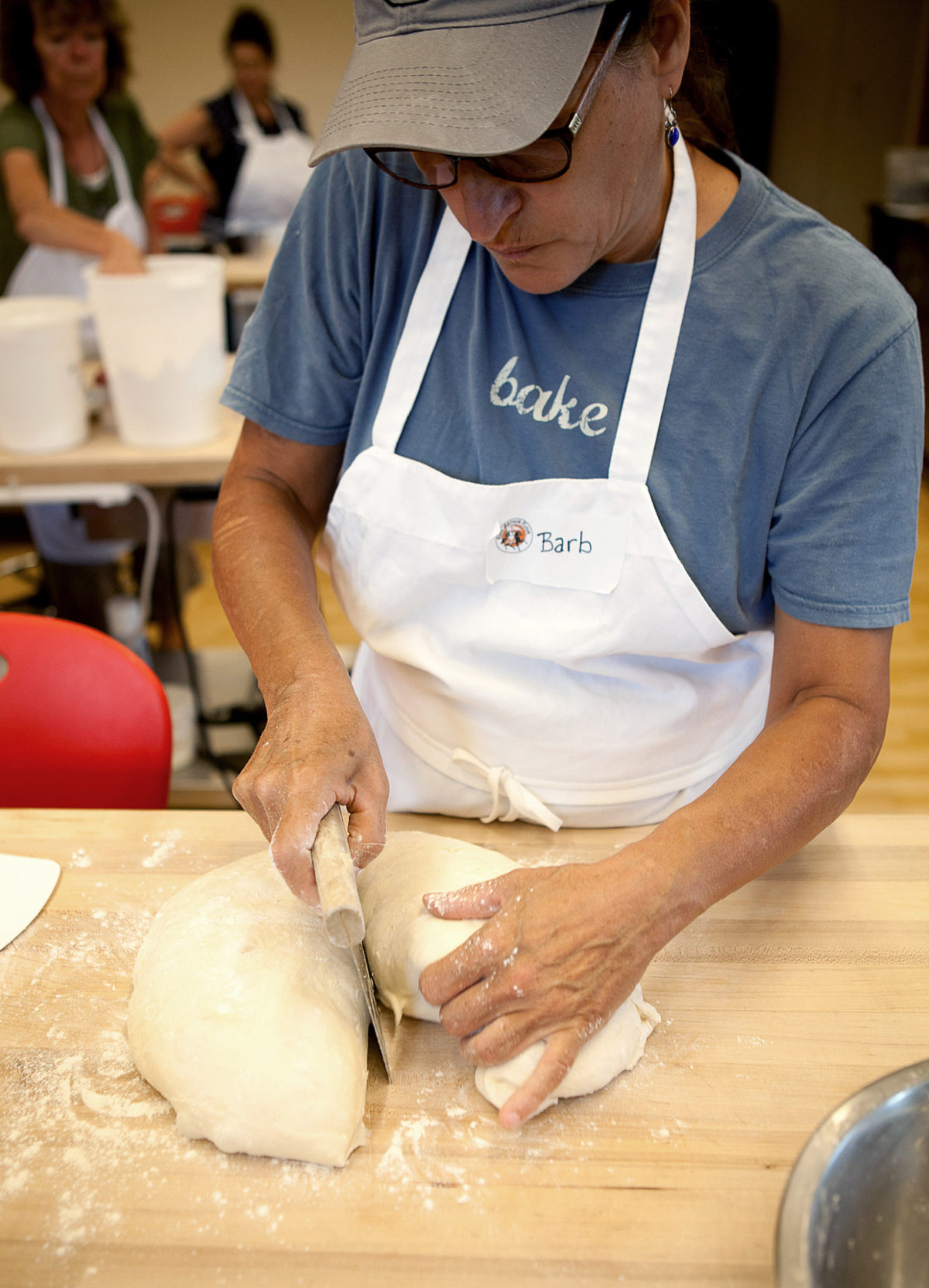
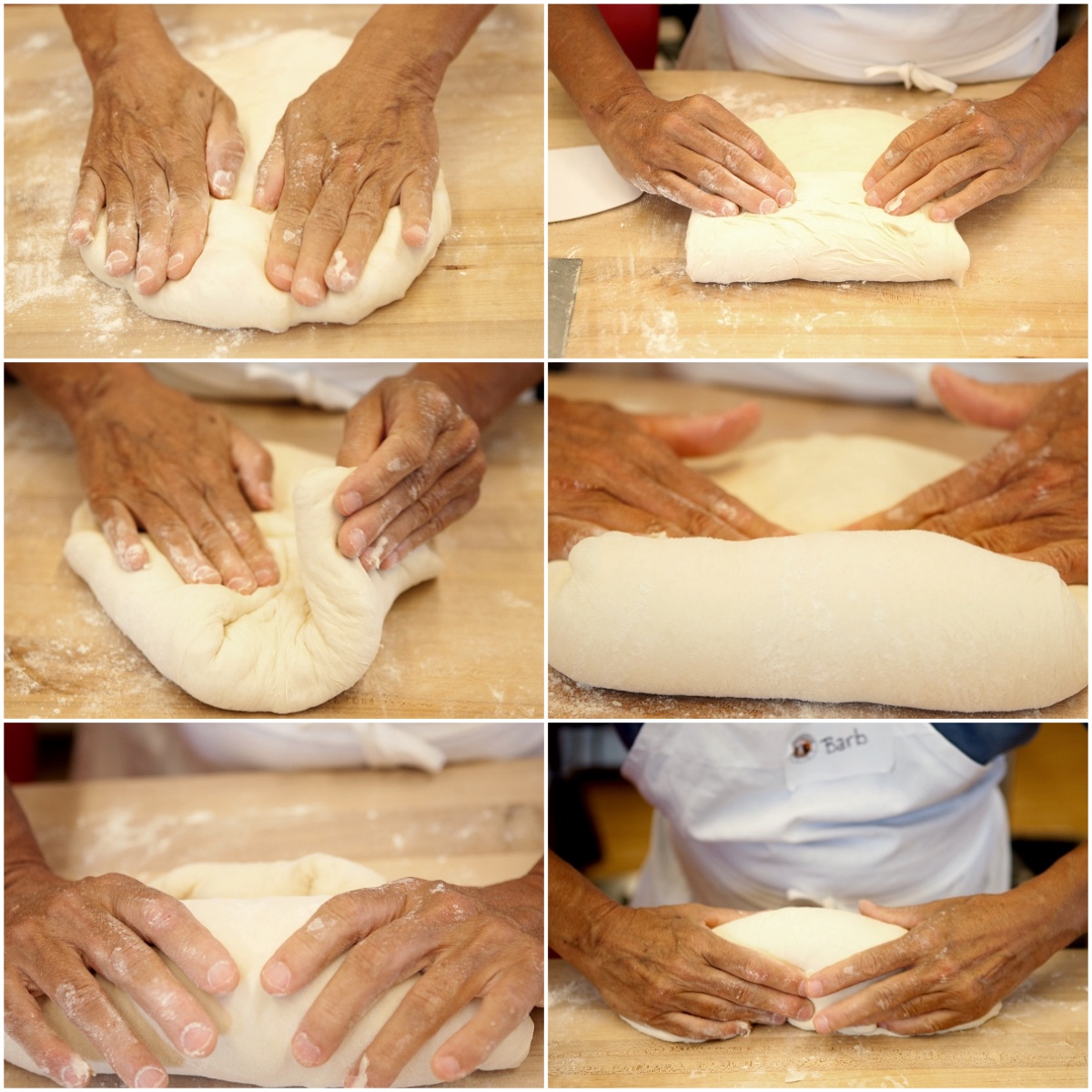
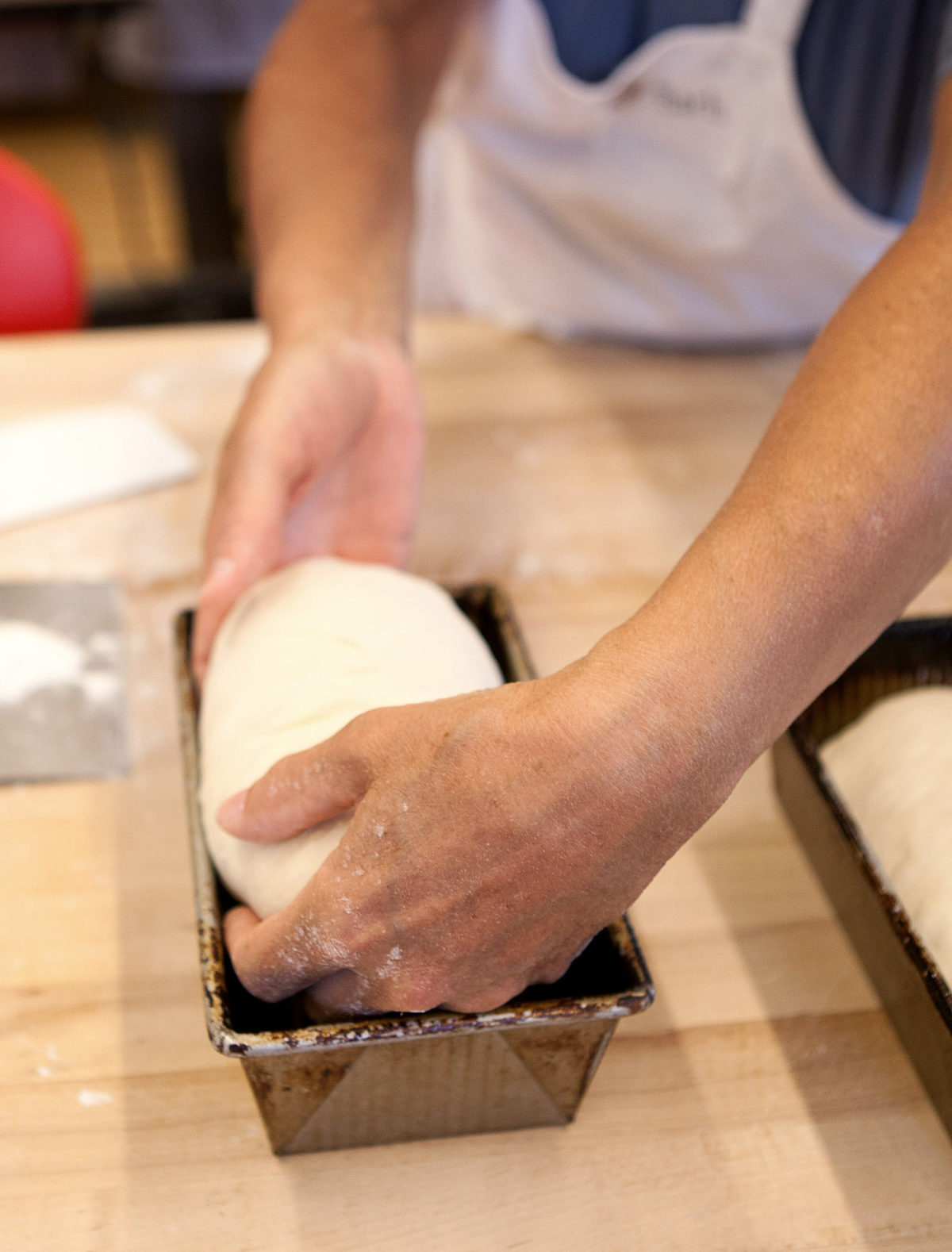
This recipe makes two 8 1/2" X 4 1/2" loaves. Divide the dough in half, and shape it into two 8" logs. Settle them into the lightly greased pans. For help in shaping your loaf, check out our video.
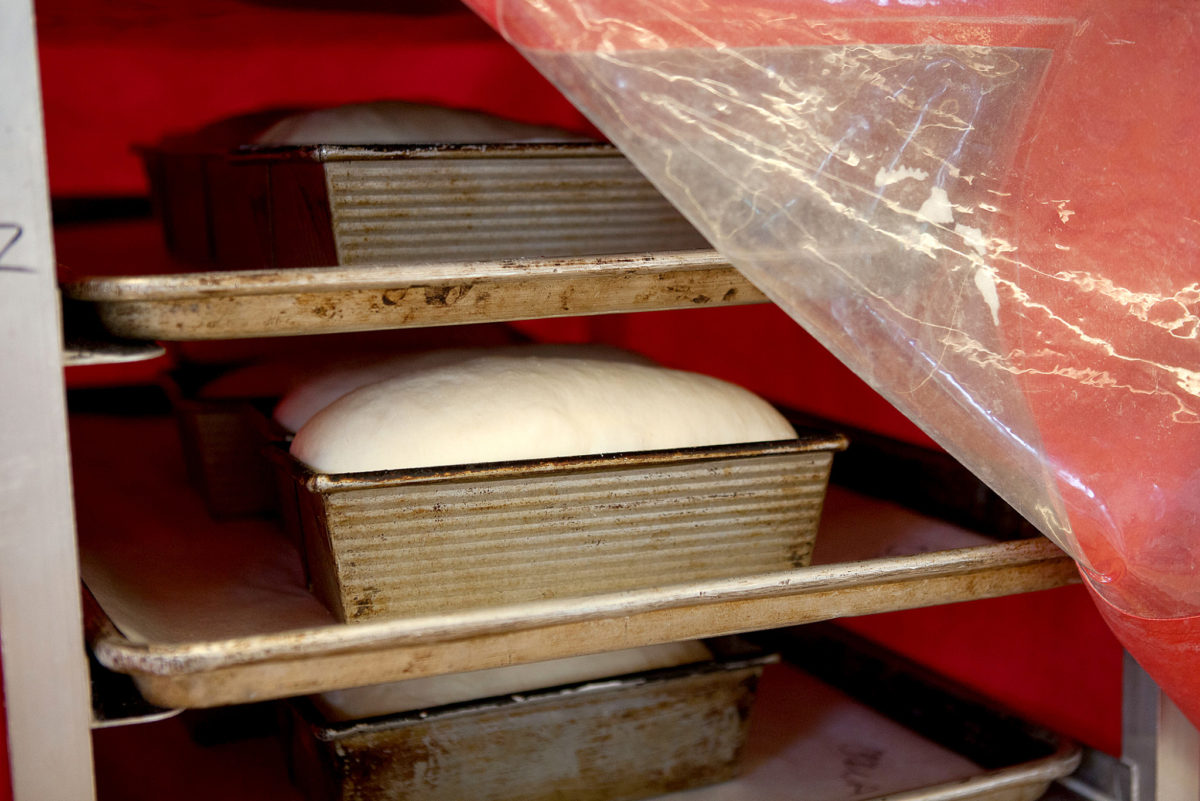
Cover the pans, and let the dough rise again for 1 to 2 hours. (Our rising loaves had a little added assistance by being placed in a proofer set at 82°F.)
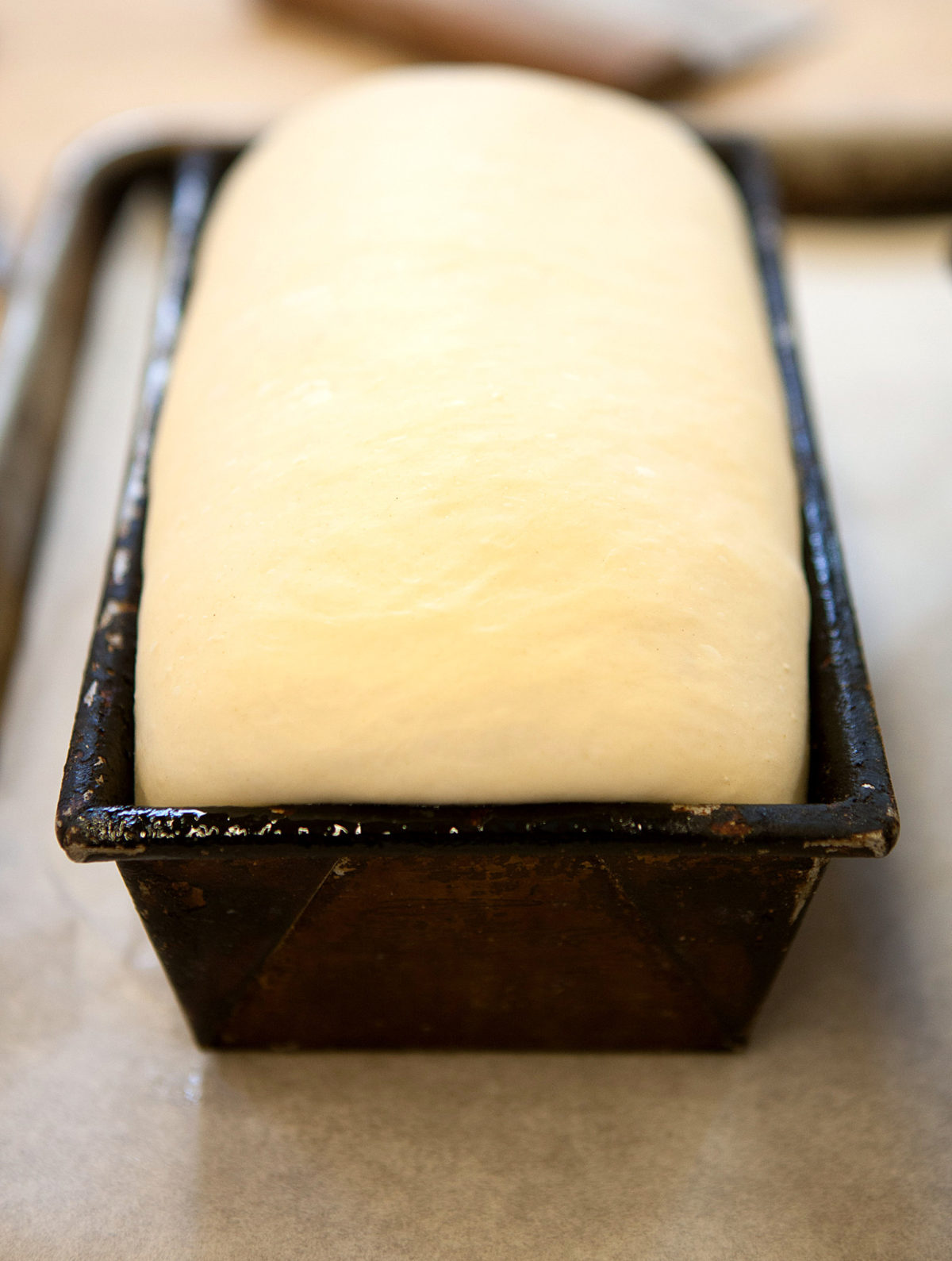
When ready to bake, the loaves will have crowned about 1" over the rim of the pan.
While the loaves are rising, preheat your oven to 375°F.
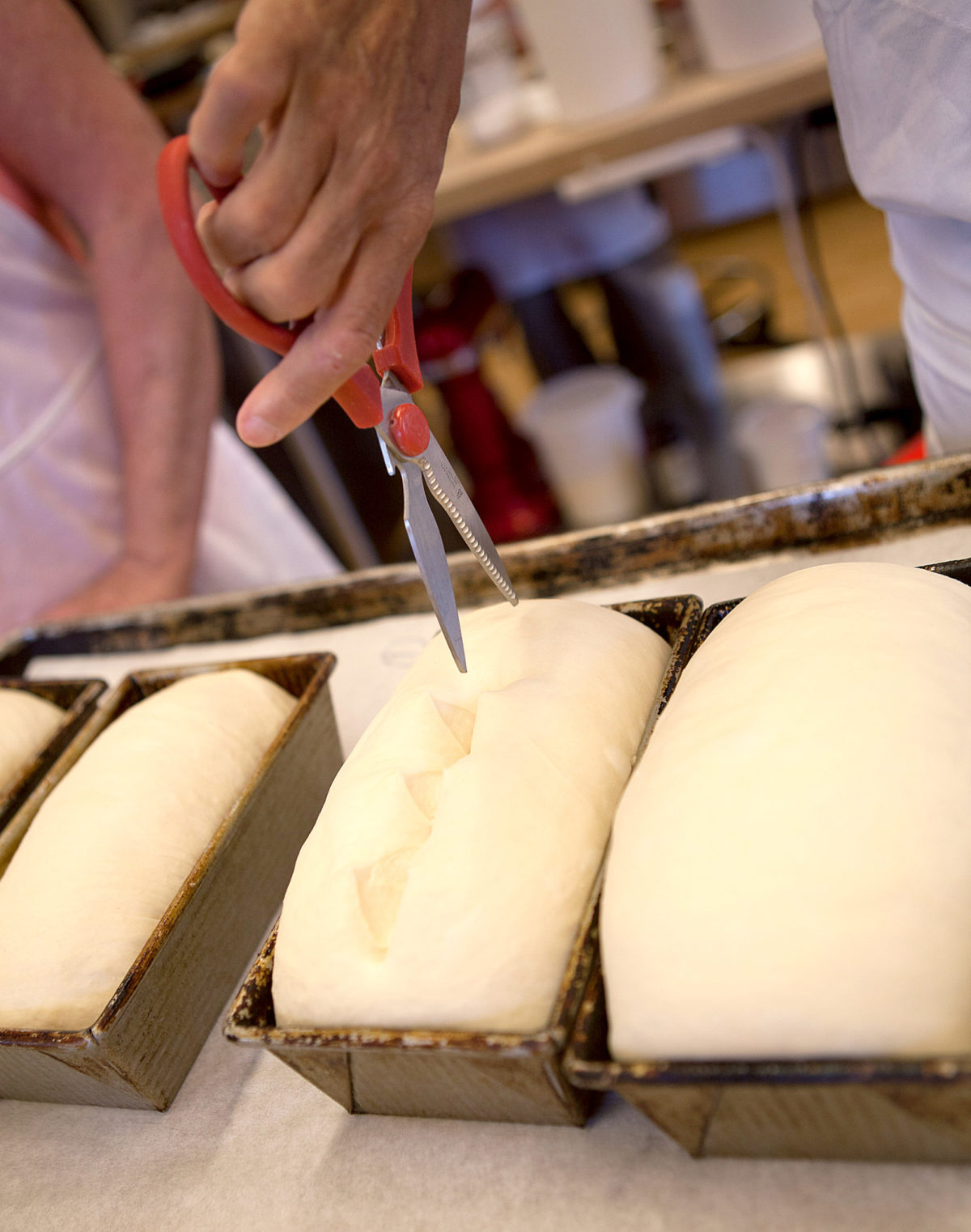
Or not. It's not absolutely necessary to score (slash) your loaves, but it does potentially help with their appearance.
Have you ever noticed the top of your loaf wrinkling as it cools? As cooling bread releases steam, pockets of air under the crust deflate and this causes the loaf to look wrinkled. Cutting or scoring the top of your loaf helps prevent those pockets of air from developing during baking.
To do a scissors cut, make several cuts about 1" deep in a line along the center of the loaf.
Bake the bread for 30 to 35 minutes, until the crust is golden brown and the sides of the loaf feel firm.
Remove the loaves from the oven, and turn them out of the pans onto a rack to cool. Let them cool completely before slicing.
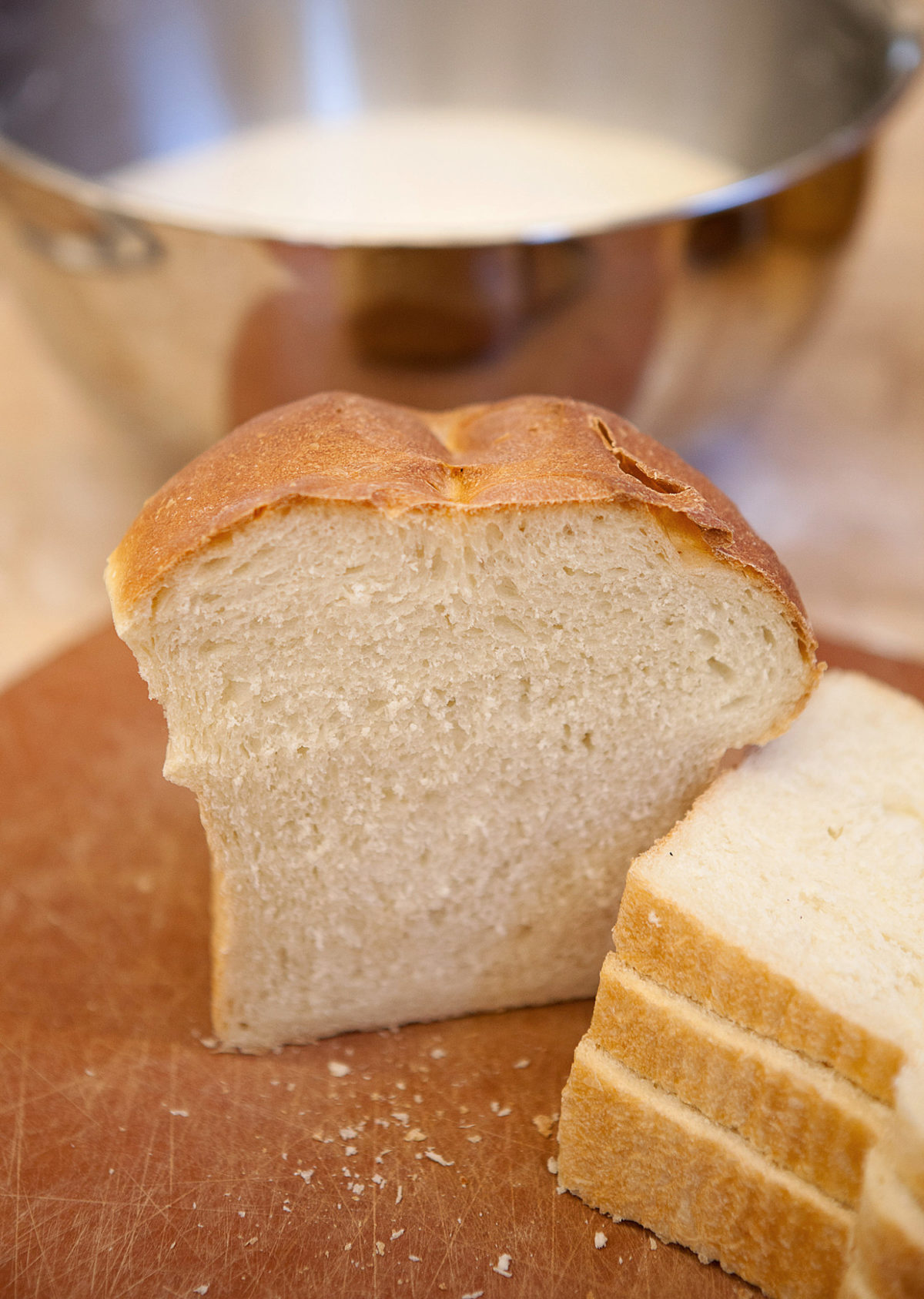
Look at this tender crumb! Perfect for grilled cheese, French toast, PB&J, or any kind of sandwich your heart desires.
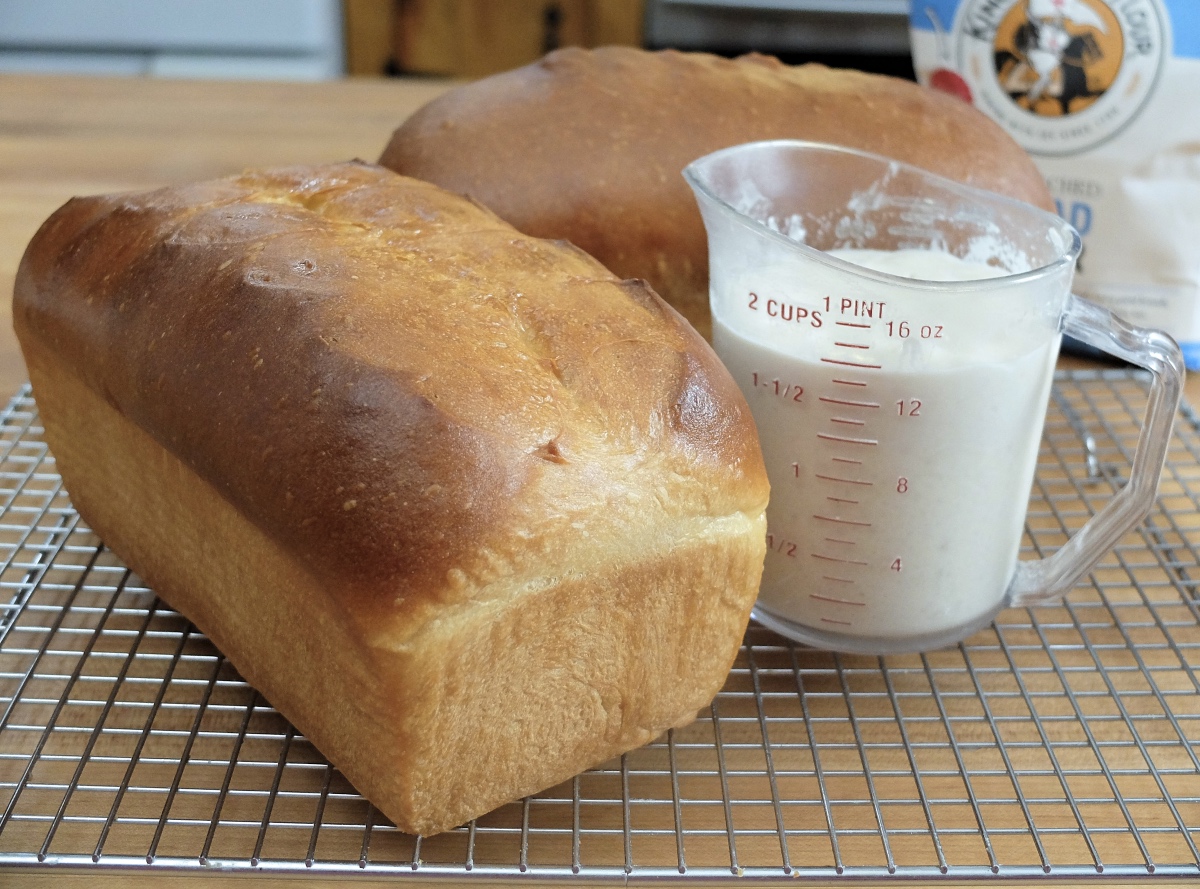
For a satiny finish, brush melted butter on top of the loaf right after it comes out of the oven. Notice how the scissor cut on the loaf in front helped eliminate surface wrinkles.
I hope you'll give this bread a try and let us know what you think. You'll not only make some beautiful and delicious bread, you'll also learn a lot about levain along the way.
Here's our Sourdough Sandwich Bread recipe.
If you get a chance to take this or any class with King Arthur Flour, I highly recommend doing so.
Here's more information about our Baking School and the classes we offer. There'll be more sourdough class-inspired blogs coming soon, so stay tuned!
Big thanks go out to Lee Clark for taking the beautiful photos for this blog, so I could get my hands in the dough!